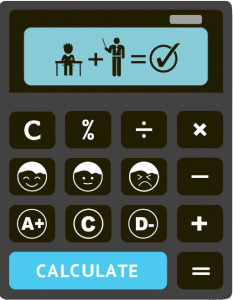Overview
In Year 6 maths, you will embark on a journey exploring the captivating realm of units of measurement. Understanding this topic is crucial as it helps you make sense of the world around you, from calculating lengths and distances to comparing masses and understanding volumes (also called capacities). This article will guide you through the essentials of using units of measurement, equipping you with the necessary skills for solving problems in the Year 6 maths curriculum.
Learning Outcomes
By reading this article, you will:
- Refresh your knowledge of shifting decimal points when multiplying or dividing by powers of 10.
- Learn about conversions of length, including kilometre (km), metre (m), centimetre (cm), and millimetre (mm).
- Explore how to add and subtract lengths, ensuring units are consistent.
- Discover how to add and subtract masses, considering units like grams (g), kilograms (kg), and milligrams (mg).
- Gain insight into capacity and its units, such as litres (L) and millilitres (mL).
- Be able to solve problems related to length, mass, and capacity.
Quick Refresher
Before we dive into specific units of measurement, let’s refresh our memory on shifting decimal points. Remember, when multiplying a number by 10 or a power of 10 (such as 100, 1000, and so on), the decimal point shifts to the right by the same number of places as there are zeroes after the 1. Similarly, when dividing by 10 or a power of 10, the decimal point shifts to the left by the corresponding number of places.
5.4 \(\times \) 10 = 54
67.2 \(\div \) 100 = 0.672
Conversions of Length
Length is an essential aspect of measurement. In Year 6 maths, you’ll encounter units such as kilometres (km), metres (m), centimetres (cm), and millimetres (mm). Understanding their relationships is key.
A ‘kilo’ means 1000 times more, while ‘milli’ means 1000 times less. Therefore, 1 km equals 1,000 m, and 1 mm is 1/1000 of a metre (m). Moreover, 10 mm make up 1 cm, and there are 100 cm in 1 m.
To convert from a larger unit to a smaller unit, we multiply, while for the opposite conversion, we divide. For instance, 5 km equals 5 x 1,000 m, which is 5,000 m. Similarly, 4,308 cm is equivalent to 4,308 ÷ 100 m, giving us 43.08 m.
Now, here’s a question for you: How many centimetres are there in 2.5 metres?
Adding and Subtracting Lengths
When adding or subtracting lengths, it is vital to have all measurements in the same unit. Let’s look at an example: 4.3 km + 350 m. To add these lengths, we first convert 4.3 km to metres, giving us 4,300 m. Then, we add 350 m, resulting in 4,650 m or 4.65 km.
Consider another example: 5.1 m – 125 cm. Before we perform the subtraction, we either need to convert 125 cm to metres or 5.1 m to cm. Using the first method, 5.1 m – 1.25 m gives us 3.85 m (= 385 cm).
Adding and Subtracting Masses
Mass, just like length, requires understanding different units. The base unit of mass is a gram (g), while a kilogram (kg) is 1000 grams, and a milligram (mg) is 1/1000 of a gram. Additionally, a ton (t) equals 1000 kilograms.
When adding or subtracting masses, ensure that all measurements are in the same unit. For example, 6.8 kg + 300 g can be rewritten as 6,800 g + 300 g, resulting in 7,100 g or 7.1 kg. Similarly, 255 mg + 3 g is equivalent to 255 mg + 3,000 mg, which gives us 3,255 mg or 3.255 g.
Can you answer this? What is the difference between 1.25 t and 500 kg?
Adding and Subtracting Capacities
Capacity refers to the amount of space an object or container can hold. In Year 6 maths, you will encounter units such as litres (L), kilolitres (kL) and millilitres (mL). Just as before, all measurements must be in the same unit before performing addition or subtraction.
For example, 5.5 L + 350 mL can be rewritten as 5,500 mL + 350 mL, which equals 5,850 mL or 5.85 L. Similarly, 3.1 kL – 450 L can be converted to 3,100 L – 450 L, giving us 2,650 L or 2.65 kL.
Now, here’s a question for you: What is the total capacity when you have 2.3 L and 450 mL?
Wrap Up
Understanding units of measurement is essential in Year 6 maths and beyond. It enables you to quantify, compare, and solve problems related to length, mass, and capacity. By mastering conversions, adding and subtracting lengths and masses, and applying these skills to practical problems, you will build a solid foundation in measurement.
If you need further assistance or more practice, don’t hesitate to reach out to us. Remember, practice makes perfect, and we’re here to support your learning journey.






